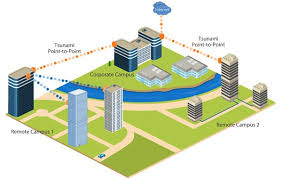Fiber Optic in Community Area Networks
Advanced research project investigating the implementation of fiber optic infrastructure for Community Area Networks (CANs) to revolutionize high-speed internet connectivity in residential communities across Bangladesh.
Project Overview
Investigating fiber optic solutions for next-generation community networking infrastructure
Research Areas
Key focus areas driving the fiber optic CAN research and development
Network Topology Design
Optimizing network architecture for efficient fiber optic distribution in community settings with star, ring, and mesh topologies.
Fiber Optic Transmission
Advanced study of single-mode and multi-mode fiber characteristics, signal propagation, and loss minimization techniques.
DWDM Systems
Dense Wavelength Division Multiplexing implementation for maximum bandwidth utilization and multiple service provisioning.
Performance Optimization
Network performance analysis, latency reduction strategies, and bandwidth efficiency improvements for community applications.
Cost-Benefit Analysis
Economic feasibility study comparing fiber optic implementation costs with long-term benefits for community development.
Network Security
Implementing robust security protocols and encryption methods to protect community network infrastructure and user data.
Current Progress
Research milestones and development status across different project phases
Network Modeling
60% Complete
Mathematical modeling of network topologies and preliminary simulation setup in progress using network modeling tools.
Research Team
Dedicated researchers working on fiber optic CAN implementation and optimization

Kawsar Mahmud Tanveer Khan
Lead Researcher & Project Coordinator
Network architecture design, fiber optic systems analysis, and research coordination. Specializing in community network infrastructure and optimization strategies.

Nobab Bin Shahanur
Network Systems Analyst
DWDM systems implementation, network performance analysis, and optimization algorithms. Focus on maximizing bandwidth efficiency in community networks.

Nazmul Islam Bahar
Cost Analysis & Implementation Specialist
Economic feasibility analysis, market research, and implementation strategies. Expertise in cost-benefit analysis for Bangladesh telecommunications market.
Project Timeline
Research phases and key milestones from July to December 2025
Future Scope & Applications
Potential extensions and real-world implementation opportunities
National Implementation
Scalable model for nationwide fiber optic CAN deployment across Bangladesh's residential communities.
Educational Applications
Support for online education, virtual classrooms, and digital learning platforms in residential communities.
Explore This Research
Follow the progress of this cutting-edge research project and connect for collaboration opportunities
